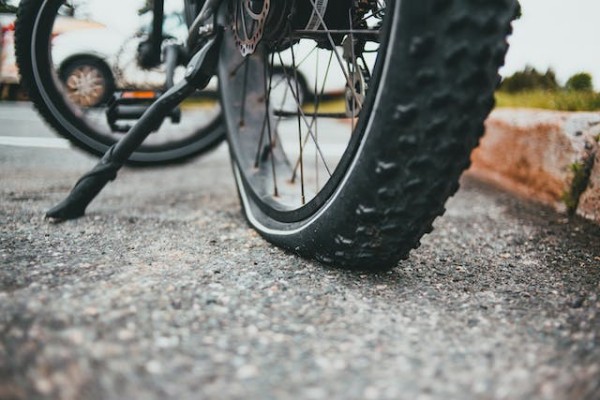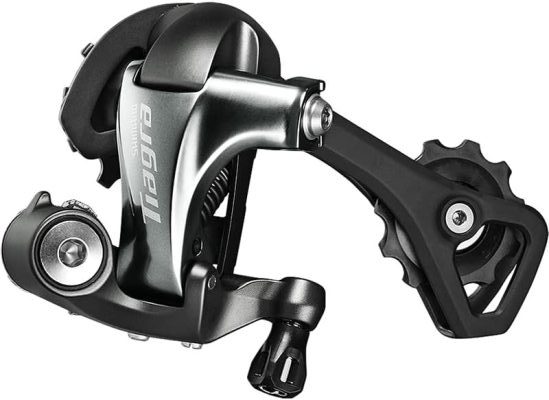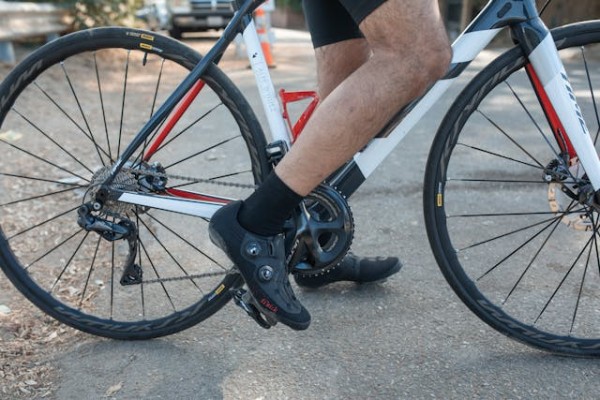Are you tired of getting stuck on the side of the road with a flat tire, feeling as helpless as a fish out of water? Well, fret no more! In this guide, we will show you how to prevent a flat tire on your next ride.
By following a few simple steps, you can ensure a smooth and hassle-free journey. From properly inflating your tires to choosing the right type, inspecting and maintaining them regularly, avoiding hazards on the road, and carrying essential tools and supplies, you’ll be well-equipped to handle any tire-related mishaps.

So, hop on your bike, and let’s dive into the world of tire maintenance, so you can enjoy your rides without any bumps in the road.
1. Proper Tire Inflation
To ensure a smooth and safe ride, you should always ride with properly inflated tires. Proper tire inflation is crucial in preventing flat tires and ensuring optimal performance.
Underinflated tires can put excessive stress on the sidewalls, leading to overheating and potential blowouts. On the other hand, overinflated tires can result in reduced traction, a harsh ride, and increased susceptibility to impact damage.
It’s important to check your tire pressure regularly using a reliable pressure gauge and inflate them to the manufacturer’s recommended specifications. This information can usually be found in the owner’s manual or on a sticker located on the driver’s side door jamb. Remember to check the pressure when the tires are cold, as heat can cause pressure to increase.
2. Choose the Right Tire Type
Use the proper tire type for your next ride to increase your chances of preventing a flat. Choosing the right tire is crucial in ensuring a smooth and safe ride. There are several factors to consider when selecting the appropriate tire type.
Firstly, determine the terrain you’ll be riding on. If you plan on tackling rough terrains with rocks and gravel, opt for a tire with increased durability and puncture resistance.
Secondly, take into account the weather conditions you’ll be riding in. For wet or muddy conditions, choose tires with deeper treads for better traction and control.
Lastly, consider the type of bike you have and your riding style. Different bikes require different tire sizes and designs to optimize performance and minimize the risk of flats.
3. Inspect and Maintain Tires Regularly
Regularly inspect and maintain your tires to ensure optimal performance and reduce the risk of encountering a flat tire on your next ride. Start by visually examining your tires for any signs of damage, such as cuts, punctures, or bulges.
Check the tire pressure regularly using a tire pressure gauge to ensure it’s within the recommended range. Underinflated tires can increase the likelihood of flats and affect your bike’s handling.
Additionally, inspect the tire tread depth to ensure it meets the minimum requirements. Worn-out tread can lead to reduced traction and a higher risk of flats. Lastly, clean your tires regularly to remove any debris that could potentially puncture the tire.
4. Avoid Hazards on the Road
Inspecting and maintaining your tires regularly is crucial for preventing a flat tire on your next ride. It’s equally important to be vigilant and avoid hazards on the road.
Hazards on the road can pose a serious threat to the integrity of your tires. One common hazard to watch out for is potholes. These indentations in the road can cause significant damage to your tires, leading to punctures or even blowouts.
Another hazard to be aware of is debris on the road, such as broken glass or metal shards. These objects can easily penetrate your tire and cause a flat. Additionally, be cautious of curbs, speed bumps, and other obstacles that can scrape or damage your tires.
5. Carry Essential Tools and Supplies
To prevent a flat tire on your next ride, make sure you have the essential tools and supplies with you. Carrying these items will help you handle any unforeseen issues that may arise during your ride.
Firstly, you should have a spare tube that matches the size of your tires. It’s also important to carry a tire lever, which will assist in removing the tire from the rim. Additionally, a mini pump or CO2 inflator is necessary to inflate the tire once you have repaired it.
A patch kit is essential for fixing any punctures, and it should include patches, glue, and sandpaper. Lastly, it’s advised to bring a multi-tool, which will help you with any minor repairs that you might encounter.
Frequently Asked Questions
What Are Some Common Signs of Tire Wear and Tear That Riders Should Look Out For?
If you want to avoid getting a flat tire on your next ride, it’s important to be aware of the signs of tire wear and tear. Keep an eye out for things like low tread depth, cracks or bulges in the tire, and uneven wear patterns.
These can indicate that your tires are nearing the end of their lifespan and may be more prone to punctures or blowouts. Regularly inspecting your tires and replacing them when necessary will help keep you safe on the road.
Are There Any Specific Road Conditions or Surfaces That Are More Likely to Cause Flat Tires?
On your next ride, you may encounter specific road conditions or surfaces that are more likely to cause flat tires. Potholes, sharp objects like nails or glass, and uneven terrain can all increase the risk of getting a flat tire.
It’s important to stay vigilant and avoid these hazards as much as possible. Keeping your tires properly inflated and regularly inspecting them for wear and tear can also help prevent flats on your ride.
How Often Should Riders Check Their Tire Pressure to Ensure Proper Inflation?
To ensure proper inflation, you should check your tire pressure regularly. This helps prevent flat tires and ensures a smooth ride. It’s recommended to check your tire pressure at least once a week, or before every ride if possible. Use a tire pressure gauge to measure the pressure and compare it to the recommended range indicated on the tire sidewall or in your bike’s manual.
Can Using Tire Sealants or Puncture-Resistant Tubes Help Prevent Flat Tires?
Using tire sealants or puncture-resistant tubes can help prevent flat tires on your next ride. These products provide an extra layer of protection against punctures and seal any small holes that may occur.
While some may argue that these options add weight to your bike, the added peace of mind and reduced risk of flats far outweigh the minimal weight increase.
Are There Any Specific Tools or Supplies That Riders Should Carry for Emergency Tire Repairs on the Go?
To ensure you’re prepared for emergency tire repairs on the go, there are a few essential tools and supplies you should carry. A compact tire pump will allow you to inflate your tire if it goes flat. Additionally, having tire levers will make it easier to remove the tire from the rim.
It’s also a good idea to carry a spare tube or patch kit, as well as a multi-tool for any other necessary adjustments or repairs. Being equipped with these items will help you stay prepared for any unexpected flat tires.
Conclusion
By following these simple steps, you can ensure a smooth and hassle-free ride without the fear of a flat tire. Keep your tires properly inflated, choose the right type of tire for your ride, and regularly inspect and maintain them.
Stay vigilant on the road, avoiding any potential hazards. And don’t forget to carry essential tools and supplies for any unexpected situations. With these precautions in place, you’ll be cruising along with the wind in your hair and no worries about flat tires.





